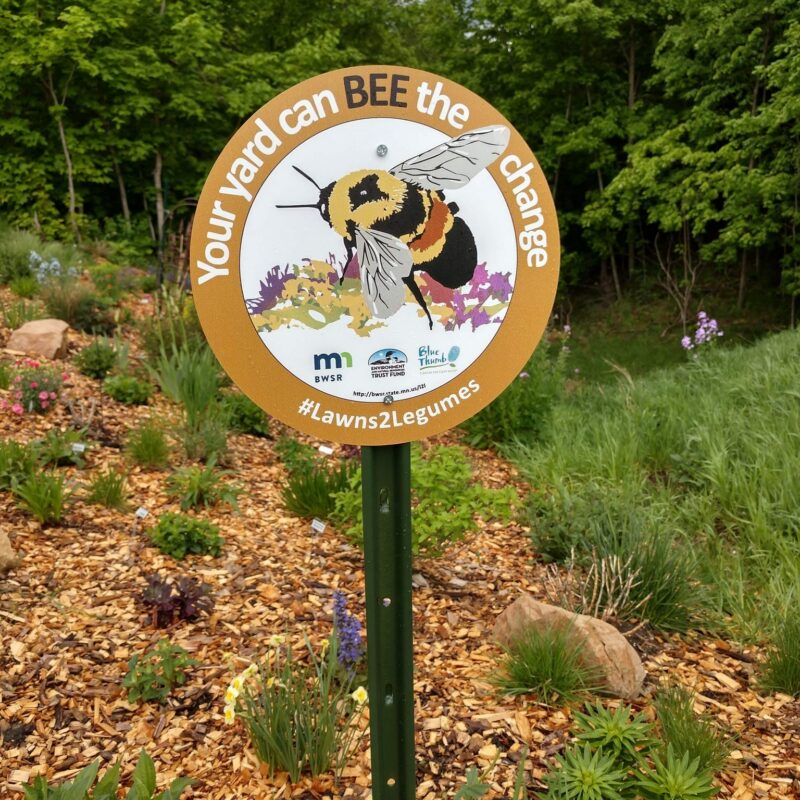


By Lily Carr, Lake Steward Coordinator
Welcome to January in the land of 10,000 lakes!
In my corner of Minnesota, pond hockey season is in full swing. A brave few take the plunge into the icy waters of Cedar Lake through a hole cut in the ice. Others huddle in cozy ice fishing huts, hopeful for the day’s catch. I prefer to bundle up and crunch across the snow, soaking in the serene beauty of the pale trees. There’s something uniquely Minnesotan about embracing the stoic calm of winter—a quiet season that invites us to slow down and reflect.
Beneath the snow and ice, the lakes are far from dormant. The water near the surface cools, becomes denser, and sinks, pushing the warmer water below to the surface. This natural process, called stratification and turnover, is essential for maintaining a healthy ecosystem. It brings oxygen to the bottom of the lake for fish and other cold-blooded creatures to thrive. Meanwhile, aquatic plants go dormant, conserving their energy in their roots until the ice finally melts.
It’s a moment of rest and renewal, both for the lake and for us. In these winter months, we gather, huddle together for warmth, and take a collective pause before the busy cycle of the year begins again. But when spring arrives, the lakes will awaken, first at the shoreline, where the warmth of the sun meets the earth.
Shoreline plants are more than just a picturesque backdrop to a lake day—they are vital guardians of our lakes. They act as a natural shield against erosion, with their deep roots holding soil in place and preventing harmful runoff from entering the water. As the ice melts, these plants will spring to life, covering the shoreline with a vibrant palette of colors. Milkweed, Joe Pye weed, and Asters—native plants to Minnesota—will bloom, attracting essential pollinators like bees and butterflies. These plants will stabilize the shore while also protecting the lake from phosphorus runoff, which can lead to algal blooms and water quality degradation.


Photos courtesy of Roger Rauschendorfer
Minnesota’s lakes, and the ecosystems that they are a part of, have been shaped by human hands for thousands of years. But today, the impact we have is more profound than ever. From the increasing frequency of harmful algal blooms to the spread of aquatic invasive species, our actions have consequences. But there’s hope. The health of our lakes is still a delicate balance, and it’s not too late to make a positive difference.
Caring for our lakes doesn’t necessarily require a monumental effort—it can start with small, simple changes. For instance, leaving a buffer zone of native vegetation between your property and the water can go a long way in protecting the ecosystem. You don’t even need to plant anything—just set up some stakes 25 feet from the shoreline and stop mowing past them. In a few short years, you’ll see a thriving polyculture of plants that help filter runoff, provide wildlife habitat, and keep your shoreline intact.


There’s also plenty of support available to help you take action. Educational resources, grants, and materials are readily accessible. In fact, Minnesotans voted overwhelmingly to approve continued funding for the Environment and Natural Resources Trust Fund (ENRTF), which provides crucial financial support for programs like Lawns to Legumes. This initiative helps individuals restore their yards and reduce water pollution, creating a more sustainable future for our lakes.
Protecting our lakes shouldn’t be a lonely endeavor—it’s a collective effort that requires all of us to come together. More and more, local governments and organizations like the Minnesota Pollution Control Agency (MPCA) are emphasizing the importance of property owners in safeguarding our natural resources. If we all take responsibility for our piece of the shoreline, we can make a real impact.
The idea is simple: together, we can create a movement of sustainable stewardship, where every Minnesotan plays a part in preserving the beauty and health of our lakes for future generations. Whether you’re planting native plants, reducing your water use, or simply advocating for better environmental practices, your actions matter. When we all act, we inspire others to do the same, and together, we can restore balance to these delicate ecosystems.
So this spring, as the ice begins to melt and the lakes come to life, consider the role you can play in protecting the waters we cherish. It doesn’t need to be a massive overhaul—just a few thoughtful, intentional changes to the way we interact with the land can make a world of difference. By managing our properties sustainably, we not only protect the lakes but ensure that future generations of Minnesotans can enjoy them too. Become a Lake Steward, teach your neighbors, and before long see the benefits of collective stewardship on your lake.

Summer will be here before we know it- Now is the time to apply for grant funding through Lawns to Legumes! Find the application here and see if you qualify for up to $400 matching funds for a restoration of your yard! By becoming a Lake Steward, you lead the movement in collaborative, positive, lake protection.
Looking for more information? Visit the Lake Steward webpage for resources and steps you can take, one at a time, towards healthy lakes.
